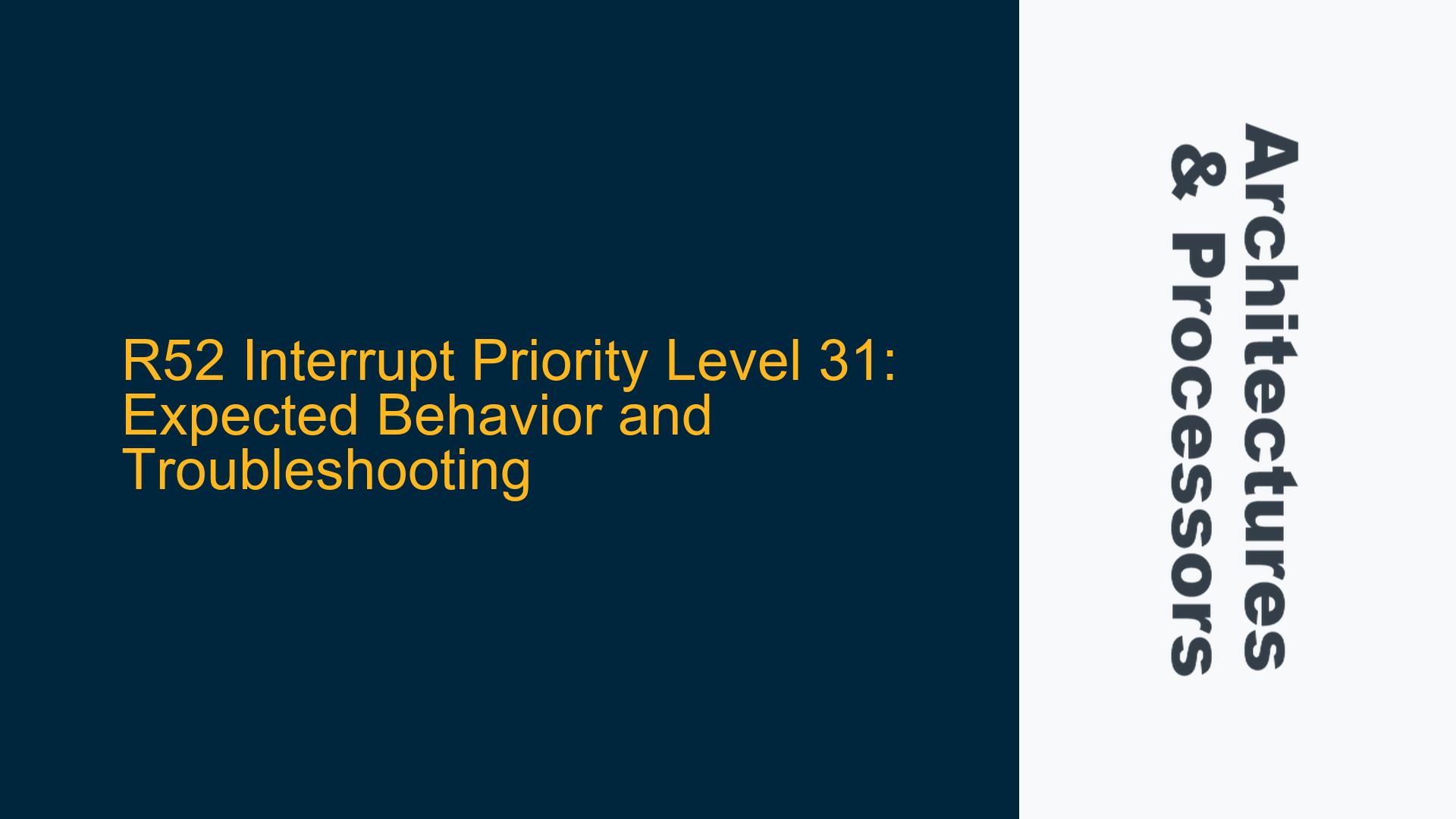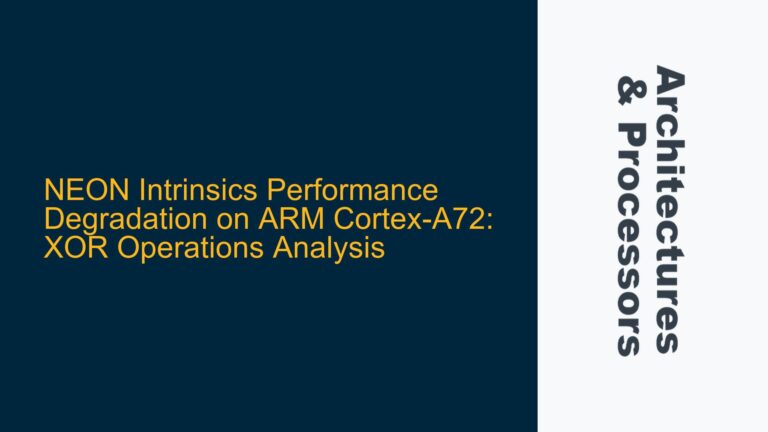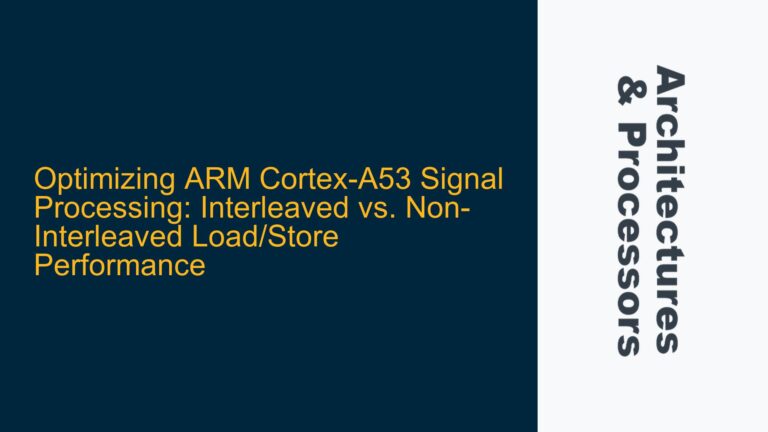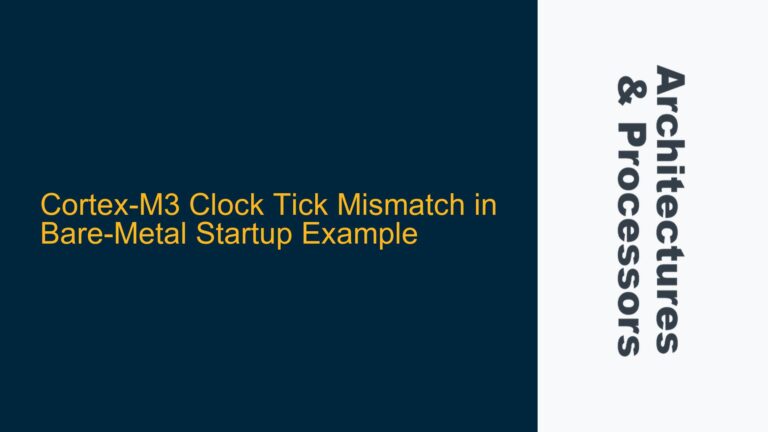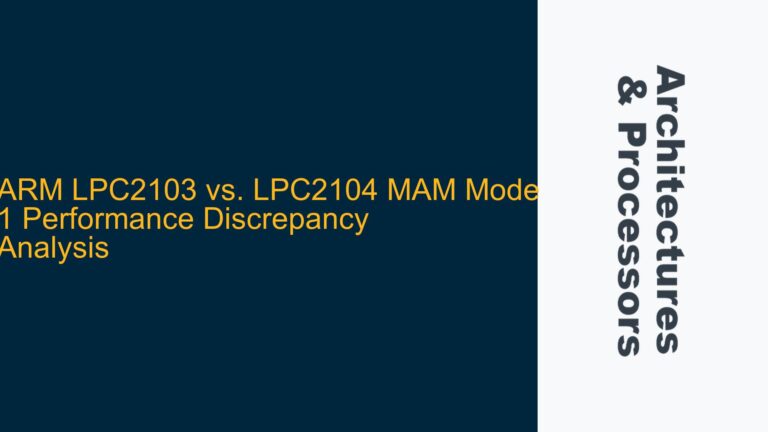ARM Cortex-R52 Interrupt Priority Level 31: Non-Preemptive Behavior
The ARM Cortex-R52 processor, designed for real-time and safety-critical applications, implements a sophisticated interrupt handling mechanism. One of the key features of this architecture is the configurable priority levels for interrupts, which determine the order in which interrupts are serviced. The Cortex-R52 supports up to 32 priority levels, with priority level 0 being the highest and priority level 31 being the lowest. However, a peculiar behavior is observed when an interrupt is assigned priority level 31: the interrupt does not preempt any other tasks or interrupts, effectively behaving as if it were masked. This behavior is not immediately intuitive and requires a deep dive into the architecture’s interrupt handling mechanisms to understand.
The Cortex-R52’s interrupt controller, the Generic Interrupt Controller (GIC), plays a crucial role in managing interrupt priorities. The GIC is responsible for prioritizing interrupts and delivering them to the CPU core. When an interrupt is assigned priority level 31, the GIC treats it as the lowest possible priority, which has implications for how the interrupt is handled. Specifically, the GIC will not preempt any other interrupt or task that is currently executing, regardless of its priority. This behavior is by design and is documented in the ARM architecture reference manual, but it can be counterintuitive for developers who expect all interrupts to be preemptive.
The non-preemptive behavior of priority level 31 interrupts can lead to confusion, especially in systems where developers rely on interrupts to handle time-critical tasks. For example, if a high-priority task is running and an interrupt with priority level 31 is triggered, the interrupt will not preempt the task. Instead, it will remain pending until the task completes or a lower-priority interrupt is encountered. This can result in delayed interrupt handling, which may not be acceptable in real-time systems.
To further complicate matters, the behavior of software-generated interrupts, such as those triggered by the SVC (Supervisor Call) instruction, must also be considered. The SVC instruction is used to generate a software interrupt, which can be used to implement system calls or other privileged operations. The priority of an SVC interrupt is determined by the configuration of the GIC and can be set to any valid priority level, including level 31. However, if an SVC interrupt is assigned priority level 31, it will exhibit the same non-preemptive behavior as other interrupts at this level.
Understanding the expected behavior of priority level 31 interrupts is crucial for designing robust and predictable real-time systems. Developers must be aware of the implications of assigning this priority level to interrupts and should carefully consider whether it is appropriate for their specific use case. In some cases, it may be necessary to avoid using priority level 31 altogether or to implement additional mechanisms to ensure timely interrupt handling.
GIC Configuration and Priority Level 31: Masking and Preemption Rules
The behavior of priority level 31 interrupts in the ARM Cortex-R52 is deeply rooted in the configuration of the Generic Interrupt Controller (GIC) and the underlying principles of interrupt handling in ARM architectures. The GIC is responsible for managing the priority levels of interrupts and determining which interrupts should be preempted or masked based on their priority. When an interrupt is assigned priority level 31, the GIC treats it as the lowest possible priority, which has specific implications for how the interrupt is handled.
One of the key factors influencing the behavior of priority level 31 interrupts is the concept of interrupt masking. In ARM architectures, interrupts can be masked at various levels, including globally at the CPU level and individually at the GIC level. When an interrupt is masked, it is effectively disabled and will not be serviced by the CPU. However, the masking of priority level 31 interrupts is not explicitly controlled by the developer; instead, it is a consequence of the GIC’s preemption rules.
The GIC’s preemption rules dictate that an interrupt will only preempt another interrupt or task if it has a higher priority. Since priority level 31 is the lowest possible priority, an interrupt at this level will never preempt any other interrupt or task, regardless of their priority. This means that if a higher-priority task or interrupt is currently executing, a priority level 31 interrupt will remain pending until the higher-priority task or interrupt completes. This behavior is often referred to as "implicit masking" because the interrupt is effectively masked by the GIC’s preemption rules.
Another important consideration is the interaction between priority level 31 interrupts and the CPU’s current priority level. The CPU maintains a current priority level, which is the priority of the currently executing task or interrupt. When an interrupt is triggered, the GIC compares its priority to the CPU’s current priority level to determine whether it should be serviced. If the interrupt’s priority is lower than or equal to the CPU’s current priority level, it will not be serviced immediately. For priority level 31 interrupts, this means that they will only be serviced if the CPU’s current priority level is also 31 or if no other interrupts are pending.
The behavior of priority level 31 interrupts can also be influenced by the configuration of the GIC’s priority grouping. The GIC allows developers to group priority levels into different categories, such as preemptible and non-preemptible. This grouping can affect how interrupts are prioritized and serviced. However, even with priority grouping, priority level 31 interrupts will still exhibit non-preemptive behavior because they are always treated as the lowest priority.
In summary, the non-preemptive behavior of priority level 31 interrupts in the ARM Cortex-R52 is a result of the GIC’s preemption rules and the inherent properties of the priority level itself. Developers must be aware of these rules and their implications when designing real-time systems. Understanding the interaction between priority levels, interrupt masking, and the CPU’s current priority level is essential for ensuring predictable and reliable interrupt handling.
Implementing Priority Level 31 Interrupts: Best Practices and Workarounds
Given the non-preemptive behavior of priority level 31 interrupts in the ARM Cortex-R52, developers must carefully consider how to implement and manage these interrupts in their systems. While priority level 31 can be useful in certain scenarios, such as low-priority background tasks, it is generally not suitable for time-critical operations. To ensure reliable and predictable interrupt handling, developers should follow best practices and consider implementing workarounds where necessary.
One of the most important best practices is to avoid using priority level 31 for interrupts that require timely servicing. Instead, developers should assign higher priority levels to interrupts that need to preempt other tasks or interrupts. For example, interrupts that handle real-time events or critical system functions should be assigned priority levels closer to 0, ensuring that they can preempt lower-priority tasks and interrupts.
In cases where priority level 31 must be used, developers should implement mechanisms to ensure that the interrupt is serviced in a timely manner. One approach is to periodically check for pending interrupts at priority level 31 and manually trigger their servicing. This can be done by setting up a high-priority timer interrupt that periodically checks the GIC’s pending interrupt registers and services any pending priority level 31 interrupts. While this approach adds some overhead, it can help ensure that low-priority interrupts are not starved of CPU time.
Another workaround is to use the GIC’s priority grouping feature to create a separate group for low-priority interrupts. By grouping priority level 31 interrupts into a separate category, developers can ensure that they are serviced in a more predictable manner. For example, the GIC can be configured to treat priority level 31 interrupts as non-preemptible but still allow them to be serviced when no higher-priority interrupts are pending. This approach can help balance the need for low-priority interrupt handling with the requirement for timely servicing of higher-priority interrupts.
Developers should also consider the impact of priority level 31 interrupts on system performance and responsiveness. In systems with a high number of interrupts, the non-preemptive behavior of priority level 31 interrupts can lead to increased latency and reduced system performance. To mitigate this, developers should carefully analyze the interrupt load and prioritize interrupts based on their criticality. This may involve reassigning priority levels, reducing the number of interrupts, or optimizing interrupt handling routines.
Finally, developers should be aware of the interaction between priority level 31 interrupts and software-generated interrupts, such as those triggered by the SVC instruction. If an SVC interrupt is assigned priority level 31, it will exhibit the same non-preemptive behavior as other interrupts at this level. To avoid this, developers should assign higher priority levels to SVC interrupts or implement alternative mechanisms for handling system calls and privileged operations.
In conclusion, while priority level 31 interrupts in the ARM Cortex-R52 can be useful in certain scenarios, their non-preemptive behavior requires careful consideration and management. By following best practices and implementing appropriate workarounds, developers can ensure reliable and predictable interrupt handling in their systems. Understanding the underlying principles of interrupt prioritization and the GIC’s preemption rules is essential for designing robust real-time systems.
